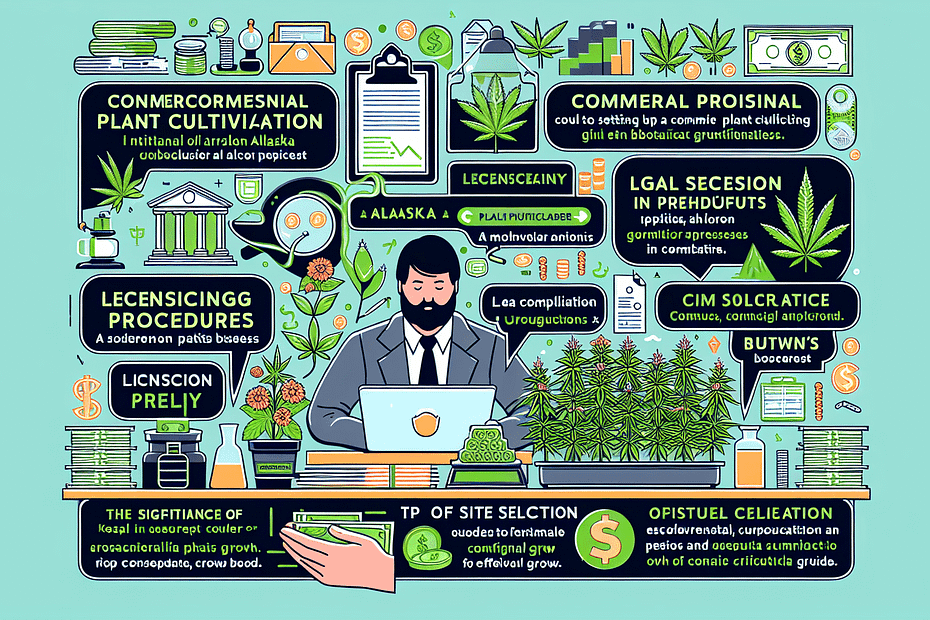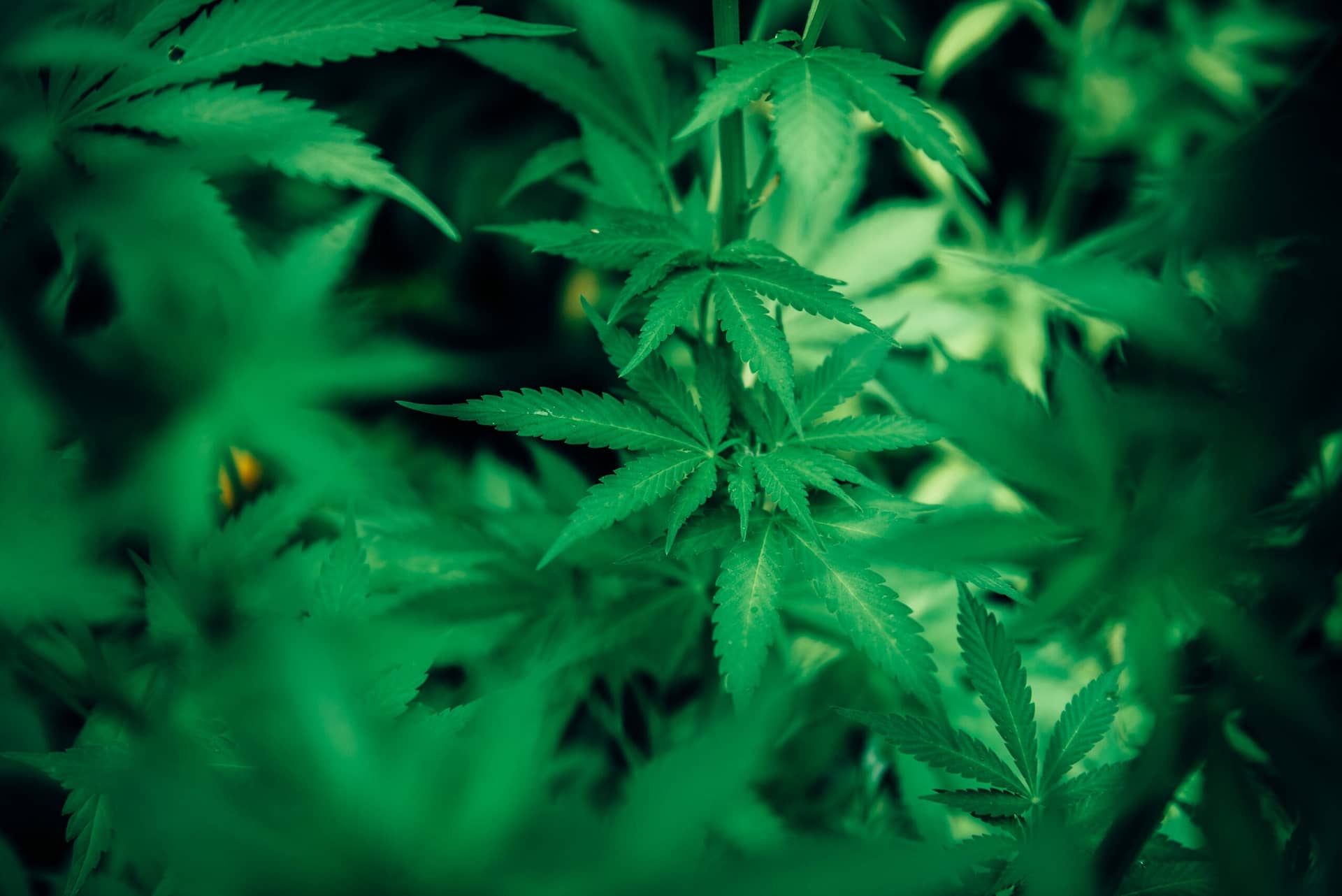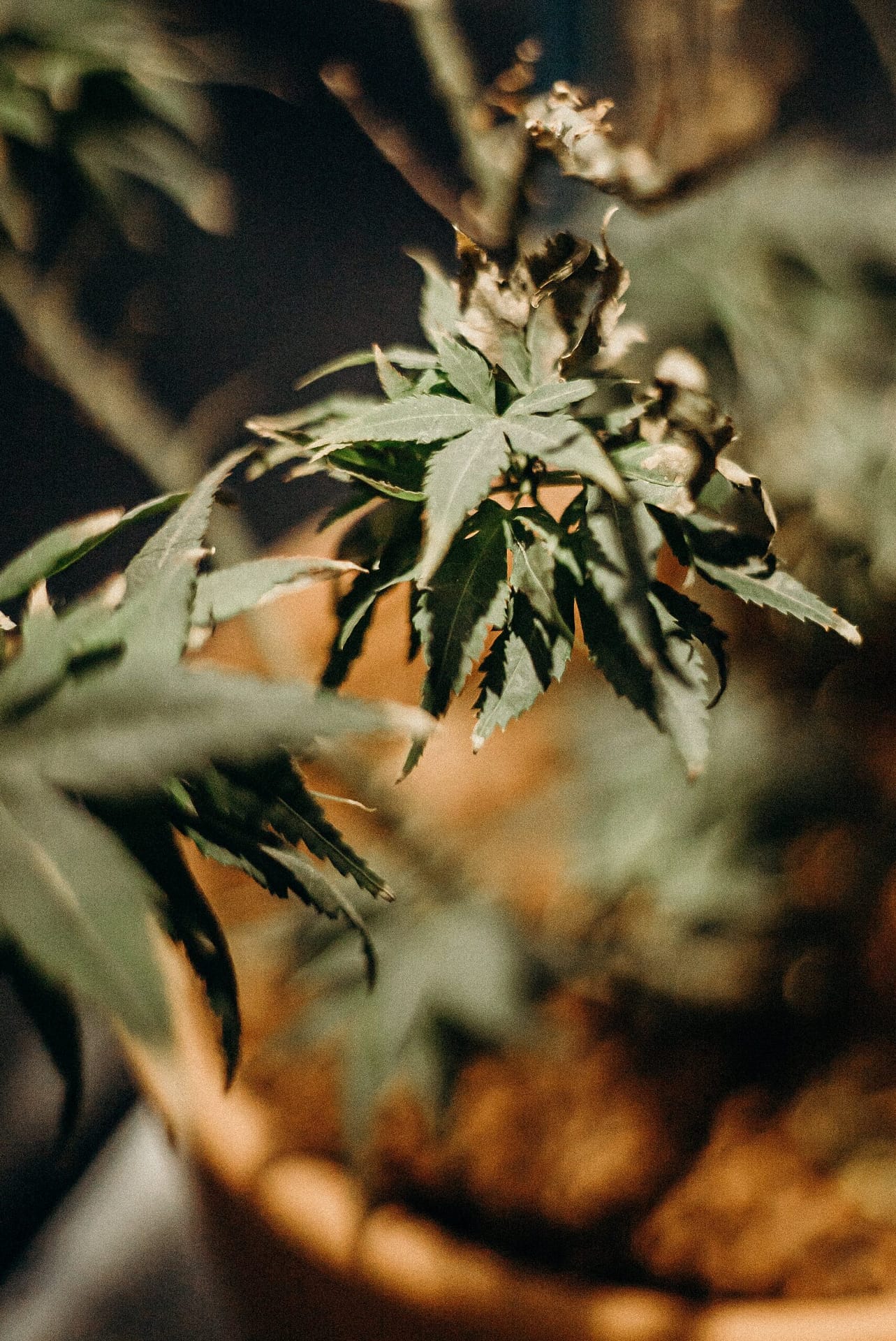If you’ve ever dreamt of starting your own commercial or personal grow in the stunning state of Alaska, then this article is for you. From the breathtaking landscapes to the unique climate, Alaska offers a plethora of opportunities for cannabis cultivation. In this article, we will explore the essential steps and requirements to kickstart your very own grow operation in this beautiful northern state. So grab your gardening gloves and get ready to embark on an exciting journey into the world of cannabis cultivation in the Last Frontier!
Research Alaska Laws and Regulations
Understand the current laws regarding commercial and personal growing in Alaska
Before starting a commercial or personal grow in Alaska, it is crucial to understand the current laws and regulations surrounding marijuana cultivation. In Alaska, both commercial and personal cultivation of marijuana is legal for adults aged 21 and older. However, there are specific regulations that growers must adhere to.
The Alaska Marijuana Control Board (AMCB) oversees the regulation of marijuana cultivation in the state. They have established guidelines and rules to ensure the safe and legal cultivation of marijuana. It is essential to familiarize yourself with these laws to avoid any legal issues or penalties.
Familiarize yourself with licensing and permit requirements
To start a commercial grow operation in Alaska, you will need to obtain a commercial marijuana establishment license from the AMCB. This license allows you to cultivate, manufacture, and sell marijuana products. The application process for the license can be complex, and it is vital to familiarize yourself with all the requirements and necessary documentation.
For personal cultivation, Alaska allows adults to grow and possess a limited number of plants. However, it is crucial to review the specific restrictions and limitations set by the state. The AMCB can provide detailed information on the personal cultivation regulations.
Review any restrictions or limitations on the number of plants allowed
When starting a commercial or personal grow in Alaska, it is essential to review any restrictions or limitations on the number of plants you are allowed to cultivate. The AMCB has set specific limits on the number of plants that can be grown, depending on the type of license or personal cultivation.
By understanding and complying with these limitations, you can ensure that your operation remains legal and avoid any potential penalties or fines. It is always advisable to stay up-to-date with any changes in the regulations to ensure ongoing compliance.
Create a Business Plan
Outline your goals and objectives for the commercial grow operation
Before starting your commercial grow operation in Alaska, it is crucial to create a comprehensive business plan. This plan will serve as a roadmap for your operation and help you define your goals and objectives. Consider what you aim to achieve with your cultivation business and set specific targets accordingly.
Identify the target market and assess demand
Understanding your target market is essential for the success of your commercial grow operation. Alaska has a thriving cannabis market, but it is still essential to assess the demand in your specific region. Conduct market research to identify potential customers, their preferences, and consumption patterns. This information will help you tailor your cultivation and marketing strategies to meet the demands of your target market.
Develop a budget and financial projections
Starting a commercial grow operation requires significant financial investment. Develop a comprehensive budget that includes all the essential elements such as equipment, supplies, employee salaries, utilities, and licensing fees. It is also crucial to create financial projections to estimate your revenue potential and the timeline for achieving profitability. This information will not only help you secure financing but also guide your business decisions in the future.
Consider the cost of equipment, supplies, and utilities
When creating a business plan for your commercial grow operation, it is essential to factor in the cost of equipment, supplies, and utilities. Cultivating marijuana requires specialized equipment such as grow lights, ventilation systems, irrigation systems, and harvesting tools. Research the cost of these items and include them in your budget.
Additionally, consider the ongoing expenses of supplies such as soil, fertilizers, and pest control products. Lastly, account for the utility costs associated with running a grow facility, including electricity, water, and potentially, a generator backup system. By considering these costs in your financial plan, you can ensure that you have a realistic budget for your operation.
Secure Financing
Research funding options such as loans or investors
Once you have determined the financial requirements for your commercial grow operation, it is time to secure financing. Research different funding options such as business loans or investors who are interested in the cannabis industry. Banks and financial institutions might have specific requirements for lending to cannabis businesses, so it is essential to understand their policies.
Prepare a detailed financial plan to present to potential lenders or investors
When approaching potential lenders or investors, it is crucial to have a detailed financial plan to present to them. This plan should include your business objectives, revenue projections, and an analysis of the market potential. Highlight the profitability and growth potential of your operation to attract potential financing partners.
Consider seeking assistance from small business support organizations
Starting a commercial grow operation in Alaska can be overwhelming, especially when it comes to securing financing. Consider seeking assistance from small business support organizations. These organizations can provide guidance on accessing funding programs, connecting with potential investors, and navigating the complexities of the cannabis industry. Their expertise and support can greatly enhance your chances of securing the necessary financing for your operation.
Select a Suitable Location
Evaluate available property options for purchase or lease
Selecting a suitable location is crucial for the success of your commercial grow operation. Evaluate available property options for purchase or lease and consider factors such as size, zoning regulations, and proximity to markets. Find a property that meets your cultivation needs and is compliant with the regulations set by the AMCB.
Consider proximity to markets, accessibility, and zoning regulations
When choosing a location for your commercial grow operation, consider the proximity to your target market. Being close to major population centers or dispensaries can streamline distribution and reduce transportation costs. Additionally, ensure that the location is easily accessible for your employees, suppliers, and customers.
Moreover, familiarize yourself with local zoning regulations to ensure that you are compliant with any specific requirements for cannabis cultivation. Some areas may have restrictions on the proximity of grow operations to certain establishments, such as schools or residential areas. Understanding and adhering to these regulations will save you potential setbacks in the future.
Assess infrastructure requirements such as water and electricity supply
Assessing the infrastructure requirements of your chosen location is essential. Ensure that the property has access to a reliable water supply and that it can support your cultivation needs. Adequate water supply is crucial for the healthy growth of cannabis plants.
Moreover, evaluate the electricity supply and ensure that it can handle the power demand of your grow operation. Marijuana cultivation requires significant lighting, ventilation, and other electrical systems. It is important to have a robust electrical system in place to avoid disruptions and maintain a consistent growing environment.
Obtain Necessary Licenses and Permits
Apply for a commercial marijuana establishment license
To legally operate a commercial grow operation in Alaska, you must apply for a commercial marijuana establishment license from the AMCB. The application process can be detailed and time-consuming, so ensure that you have all the necessary documentation and information ready when applying.
The license will allow you to cultivate, manufacture, and sell marijuana products in compliance with the state regulations. It is essential to stay updated on any changes in the licensing requirements or renewal procedures to maintain compliance.
Ensure compliance with local, state, and federal regulations
Operating a commercial grow operation requires strict compliance with local, state, and federal regulations. Familiarize yourself with these regulations and ensure that your operation adheres to them at all times. Violating any regulations can lead to penalties, fines, or even the revocation of your license.
Stay informed about any changes or updates in the laws and regulations regarding marijuana cultivation. The AMCB and other regulatory bodies can provide guidance and resources to help you stay compliant with the evolving landscape of cannabis regulations.
Obtain any additional permits or certifications required
In addition to the commercial marijuana establishment license, there may be additional permits or certifications required for your commercial grow operation. These permits may vary depending on factors such as the size of your operation, the use of certain chemicals or pesticides, or the involvement of specific manufacturing processes.
Ensure that you obtain all the necessary permits and certifications to operate your business legally. This may include permits related to environmental health, wastewater management, or hazardous materials handling. By obtaining these permits and certifications, you can demonstrate your commitment to operating a safe and compliant cultivation facility.
Setup and Equip the Facility
Design the layout of the facility to optimize workflow
When setting up your commercial grow facility, it is crucial to design the layout in a way that optimizes workflow and efficiency. Consider factors such as the flow of plants from the propagation area to the flowering rooms, as well as the movement of employees and equipment throughout the facility.
A well-designed layout will minimize the risk of contamination, improve operational efficiency, and enhance the overall productivity of your cultivation operation. Seek guidance from industry experts or consultants who specialize in designing grow facilities to ensure that your layout meets the specific needs of cannabis cultivation.
Purchase or lease necessary equipment and supplies
Equipping your commercial grow facility with the necessary equipment and supplies is essential. Research different suppliers and compare the quality and pricing before making any purchases. Some essential equipment and supplies include grow lights, environmental controls, irrigation systems, drying racks, trimming machines, and packaging materials.
It is important to invest in high-quality equipment that meets the specific requirements of cannabis cultivation. Proper equipment will help you maintain optimal growing conditions and improve the overall quality and yield of your crops. Additionally, consider leasing equipment if purchasing upfront is not financially feasible.
Install adequate security measures to meet regulatory requirements
Marijuana cultivation facilities are required to have adequate security measures in place to prevent theft and unauthorized access. Consult the regulations set by the AMCB to determine the specific security requirements for your commercial grow operation.
Install surveillance cameras, alarms, and access control systems to monitor and control entry points. Secure storage areas should be constructed to prevent unauthorized access to cannabis plants and products. By implementing comprehensive security measures, you can protect your assets and remain compliant with the regulations.
Implement proper ventilation, lighting, and irrigation systems
Creating a suitable growing environment is crucial for the success of your commercial grow operation. Implement proper ventilation, lighting, and irrigation systems to optimize the growth and yield of your cannabis plants.
Ventilation systems ensure the exchange of fresh air and remove excess heat and humidity, creating a favorable climate for plant growth. High-quality grow lights provide the necessary spectrum and intensity of light for optimal photosynthesis. And irrigation systems deliver water and nutrients to the plants, ensuring they receive the necessary sustenance for healthy development.
Investing in top-notch ventilation, lighting, and irrigation systems will contribute to healthier plants, increased yields, and improved overall quality of your cannabis products.
Source Quality Genetics
Research reputable seed banks or nurseries to obtain high-quality cannabis genetics
Selecting the right genetics is a critical step in starting a successful commercial grow operation. Research reputable seed banks or nurseries that offer high-quality cannabis genetics. Look for breeders with a good reputation and positive customer reviews to ensure the reliability and consistency of their seeds or clones.
Consider factors such as the desired characteristics, including potency, terpene profiles, and growth traits, when choosing your genetics. Determine the strains that are suitable for your target market and its preferences. By sourcing quality genetics, you lay a strong foundation for a successful cultivation operation.
Consider the desired characteristics and strains suitable for your target market
Understanding the preferences and demands of your target market is essential when selecting cannabis genetics. Consider factors such as the desired characteristics of the strains, including potency, aroma, flavor, and the effects they produce.
Some markets may favor certain strains or prefer specific attributes. It is crucial to tailor your cultivation to meet these preferences and provide what your target market desires. Conduct market research and engage with potential customers to gain insights into the strains and characteristics that appeal to them.
Ensure compliance with seed-to-sale tracking requirements
As a commercial grower in Alaska, you must comply with the seed-to-sale tracking requirements established by the AMCB. This system tracks the movement of cannabis plants from seed to final sale, ensuring transparency and accountability in the industry.
When sourcing genetics, ensure that the seed bank or nursery complies with the seed-to-sale tracking requirements. This will enable you to trace your plants’ origin, monitor their growth, and accurately report the final products’ details. Compliance with these regulations will help you maintain a transparent and compliant operation.
Hire Knowledgeable Staff
Recruit experienced growers or horticulturists with knowledge of cannabis cultivation
Hiring knowledgeable staff is crucial for the success of your commercial grow operation. Look for experienced growers or horticulturists who have expertise in cannabis cultivation. They should be familiar with industry best practices, pest management, nutrient needs, and environmental controls.
Conduct thorough interviews and ask for references to ensure that your potential employees have a proven track record in cannabis cultivation. They should be passionate about the industry, willing to learn and adapt, and capable of working in a highly regulated environment.
Consider additional roles such as trimmers, supervisors, and administrative staff
In addition to experienced growers, consider additional roles that are essential for the smooth operation of your cultivation facility. Trimmers play a crucial role in maintaining the cleanliness and quality of the harvested cannabis. Supervisors oversee cultivation operations and ensure compliance with standard operating procedures. Administrative staff handle the paperwork, record-keeping, and regulatory compliance.
Each role is integral to the success of your operation, and it is crucial to recruit qualified individuals who are committed to maintaining a high standard of cultivation practices. Provide adequate training to ensure that all employees understand the regulations and proper cultivation techniques.
Provide adequate training and support to ensure compliance and productivity
Once you have hired a knowledgeable staff, it is important to provide them with adequate training and ongoing support. This will help ensure compliance with regulations and maintain a productive work environment. Training should cover topics such as cultivation techniques, pest management, security protocols, and proper handling of cannabis products.
Invest in ongoing education and workshops to keep your employees updated with the latest industry trends and advancements in cultivation practices. Encourage open communication and provide opportunities for professional growth within your organization. By investing in your staff, you empower them to contribute to the success of your commercial grow operation.
Implement Cultivation and Harvesting Techniques
Establish a cultivation plan including planting, watering, feeding, and pest control
Implementing a cultivation plan is crucial for successful cannabis cultivation. This plan outlines the essential tasks and timelines for planting, watering, feeding, and pest control. It ensures that all aspects of cultivation are organized and executed systematically.
Develop a schedule for planting based on the desired yield and timeline. Monitor and adjust watering practices according to the needs of the plants and environmental conditions. Implement a feeding schedule that provides the necessary nutrients at each growth stage. Additionally, establish an integrated pest management strategy to prevent and address pest infestations effectively.
Regularly review and update your cultivation plan to reflect any changes or improvements in your operations. This continuous improvement approach will help you maximize the yield and quality of your cannabis products.
Monitor environmental factors such as temperature, humidity, and lighting
Creating and maintaining an optimal growing environment is essential for healthy plant growth and high-quality cannabis production. Monitor environmental factors such as temperature, humidity, and lighting to ensure that they are within the recommended ranges for cannabis cultivation.
Temperature plays a crucial role in plant development, affecting growth rates and influencing the expression of desired traits. Maintain the appropriate temperature range for each growth stage to promote vigorous vegetative growth and successful flowering.
Humidity levels also impact plant health and mold prevention. Adjust the humidity based on the growth stage and specific requirements of different strains. High humidity during flowering can increase the risk of mold formation, while low humidity can cause excessive transpiration and stunted growth.
Proper lighting is essential for photosynthesis and the overall development of cannabis plants. Choose the right spectrum, intensity, and duration of light for each growth stage. LED grow lights are highly efficient and customizable, making them a popular choice among commercial growers.
Implement proper curing and drying techniques for harvested cannabis
Properly curing and drying harvested cannabis plants is vital to preserve their quality and potency. Implement techniques that ensure a slow and controlled drying process to maintain the optimal flavor, aroma, and cannabinoid content.
Once the plants are harvested, trim the buds carefully, removing any excess leaves and stems. Hang the trimmed buds in a cool, dark, and well-ventilated space to allow for slow drying. Maintain humidity levels between 45% and 55% and ensure good airflow to prevent the growth of mold or mildew.
Monitor the drying process regularly and check for the desired moisture content. Once the buds are sufficiently dried, store them in airtight containers to continue the curing process. Regularly burp the containers to release excess moisture and achieve the desired texture and aroma.
By implementing proper curing and drying techniques, you can enhance the taste, potency, and overall quality of your cannabis products.
Develop a Marketing and Distribution Strategy
Identify target customer demographics and preferences
Developing a marketing and distribution strategy requires a deep understanding of your target customer demographics and their preferences. Identify the characteristics of your ideal customers, including their age, gender, lifestyle, and preferences for different cannabis products.
Conduct market research and engage with potential customers to gain insights into their consumption habits, product preferences, and purchase motivations. Use this information to develop targeted marketing strategies that resonate with your target audience.
Create a brand identity and packaging design
Creating a strong brand identity is essential to differentiate your commercial grow operation from competitors. Develop a unique brand identity that reflects your values, mission, and the qualities of your cannabis products. This will help you establish a memorable and recognizable presence in the market.
Design eye-catching and compliant packaging that aligns with your brand identity. Ensure that the packaging meets all the labeling and safety requirements set by the AMCB and other governing bodies. Creative and informative packaging can attract customers and communicate the quality and benefits of your products effectively.
Explore distribution channels such as dispensaries, wholesalers, or direct sales
When developing your distribution strategy, explore different channels to reach your target market. Dispensaries, both physical and online, are the most common distribution channels for cannabis products. Establish relationships with reputable dispensaries to ensure that your products reach consumers.
Consider working with wholesalers who can distribute your products to multiple dispensaries or retailers. This can help expand your reach and increase sales opportunities. Additionally, explore the option of direct sales through your own online platform or physical store, if permitted by the regulations.
Develop marketing campaigns through various channels
To effectively promote your commercial grow operation and cannabis products, develop marketing campaigns through various channels. Utilize digital marketing strategies such as search engine optimization (SEO), social media marketing, and email marketing to reach your target audience.
Create engaging and educational content that highlights the unique features and benefits of your cannabis products. This can include blog posts, videos, or podcasts that inform and engage potential customers. Collaborate with influencers and industry experts to expand your reach and enhance your brand credibility.
Participate in industry events, trade shows, and local community initiatives to build brand awareness and establish connections. These events provide networking opportunities and a chance to showcase your products to a wider audience.
By developing a comprehensive marketing and distribution strategy, you can effectively promote your brand, reach your target customers, and drive sales for your commercial grow operation.
In conclusion, starting a commercial and personal grow in Alaska requires careful research, planning, and compliance with regulations. Familiarize yourself with the current laws and regulations, obtain the necessary licenses and permits, and secure financing to support your operation. Select a suitable location, equip your facility, and invest in quality genetics and knowledgeable staff. Implement cultivation and harvesting techniques that optimize plant growth and product quality. Finally, develop a comprehensive marketing and distribution strategy to reach your target market and introduce your cannabis products effectively. With proper preparation and execution, you can establish a successful commercial grow operation in Alaska.




